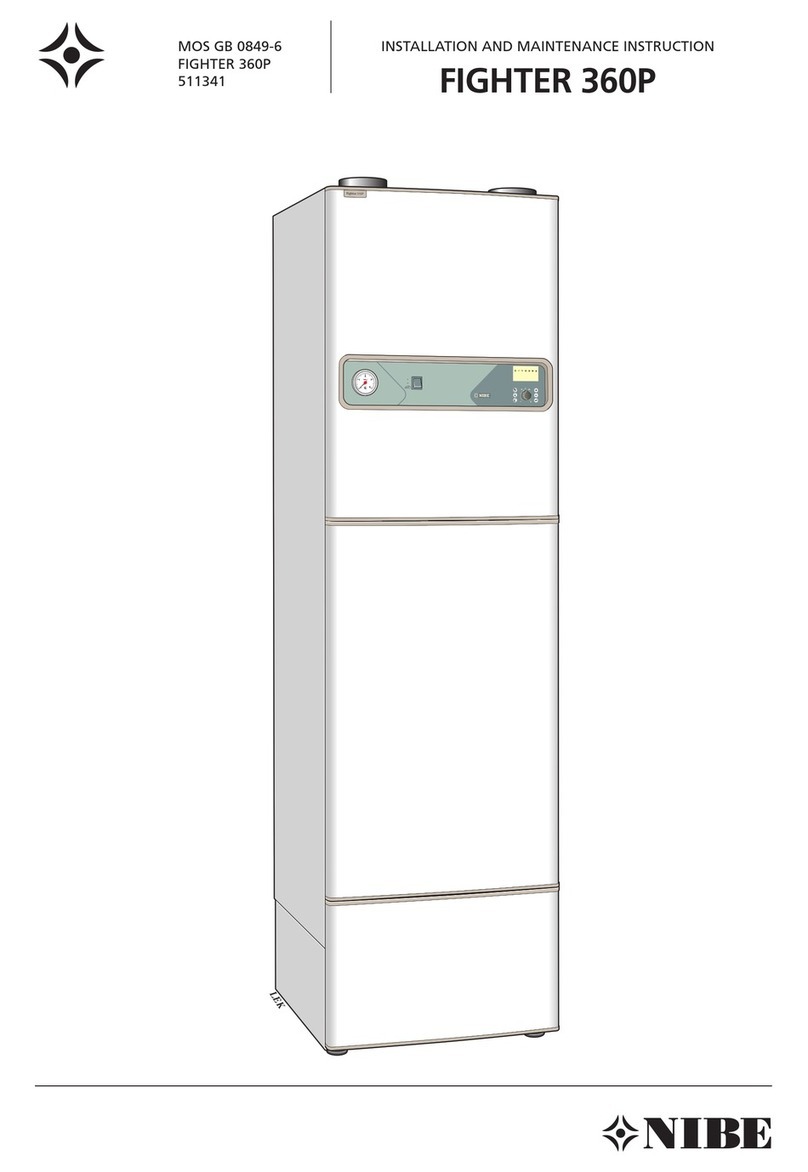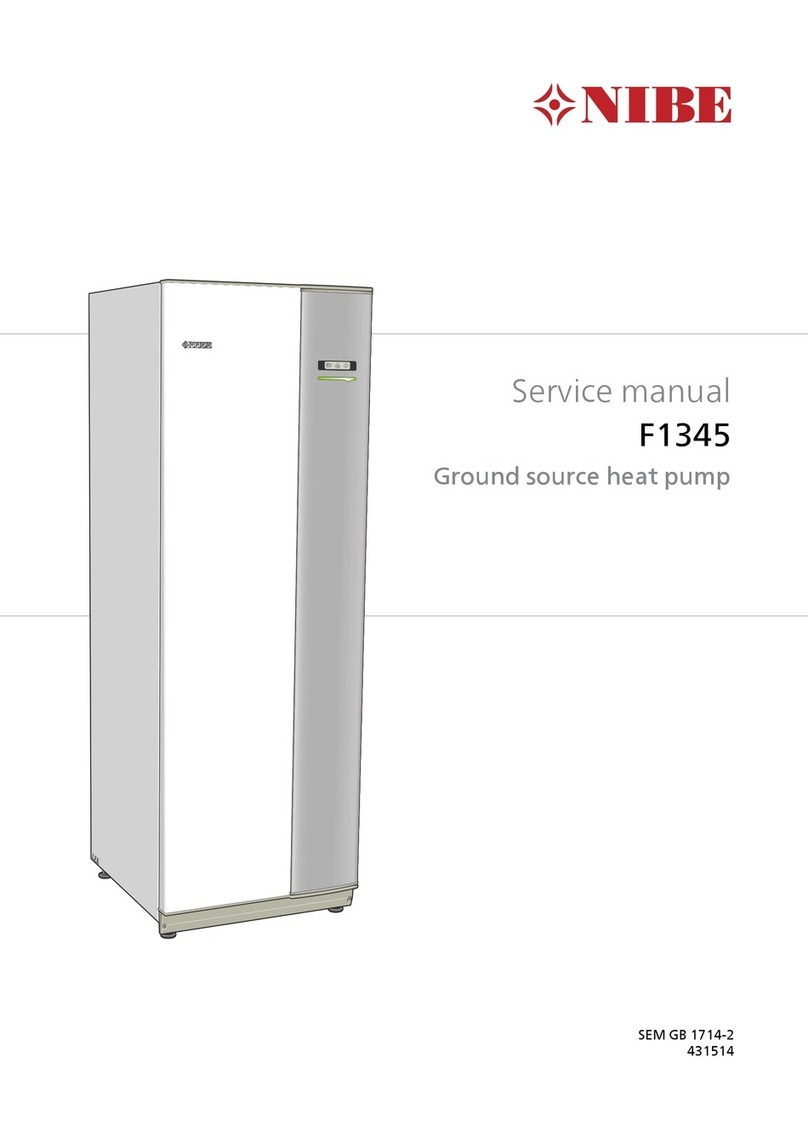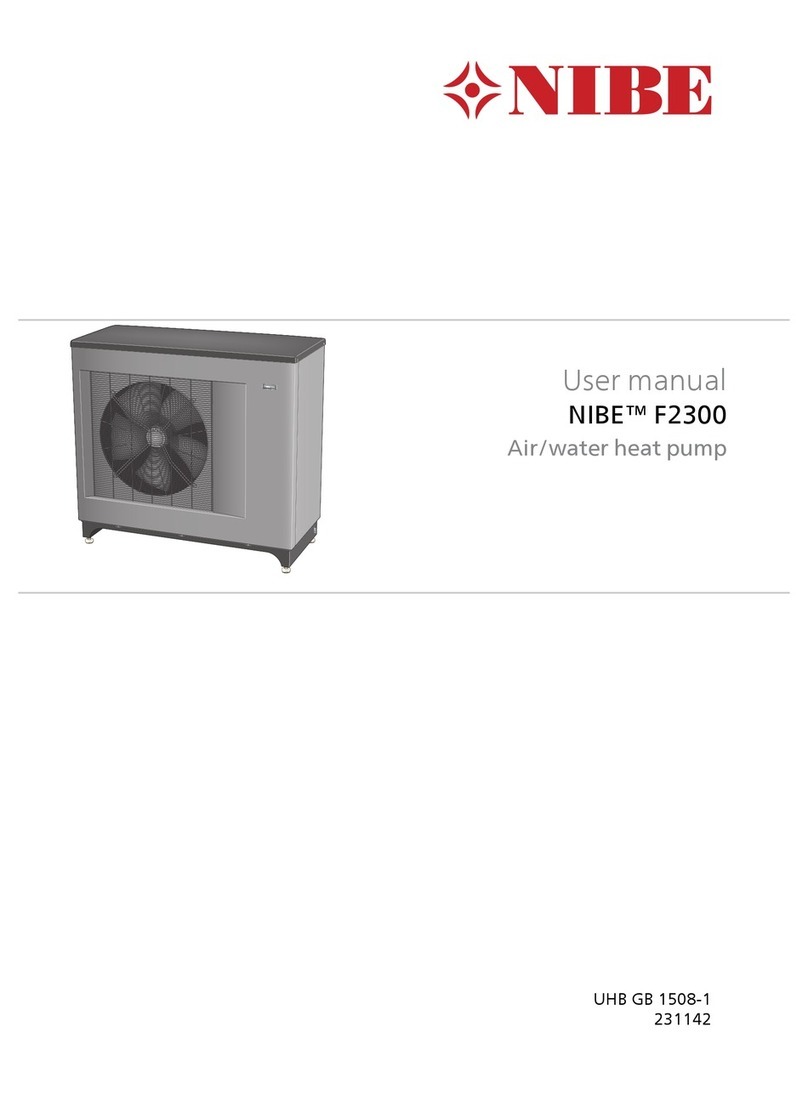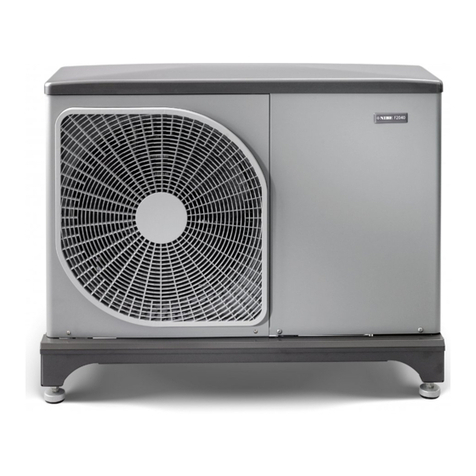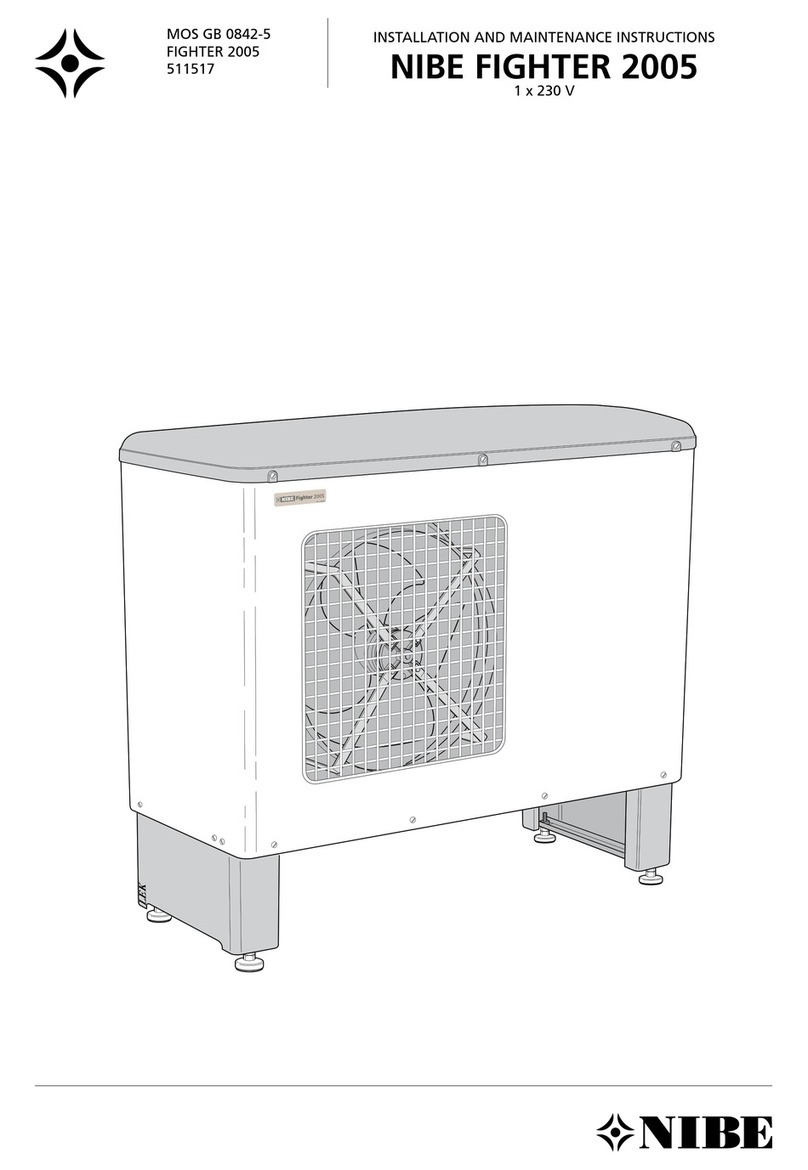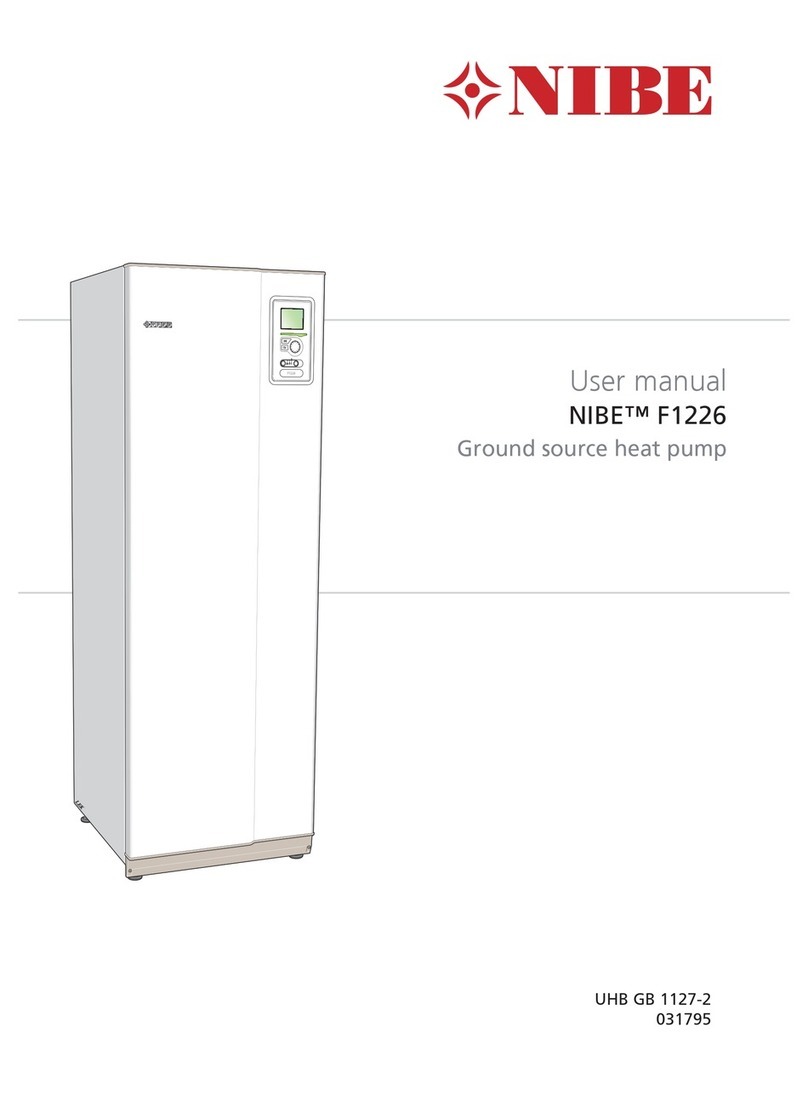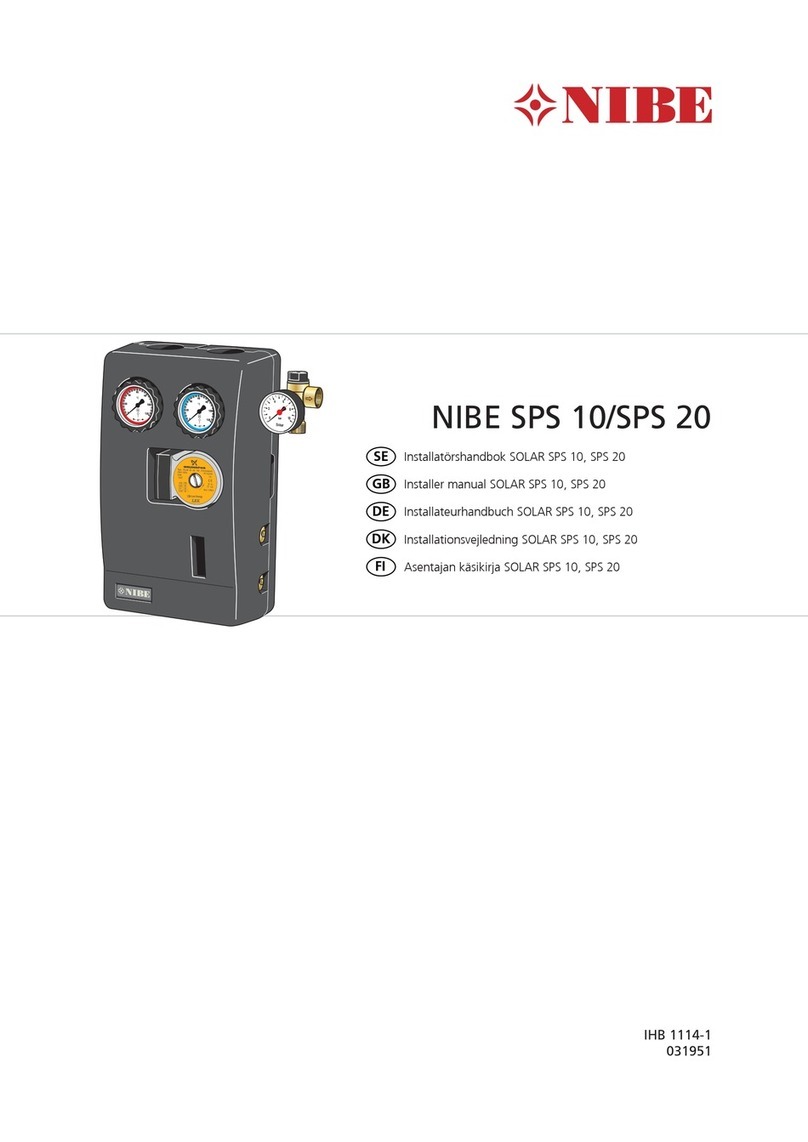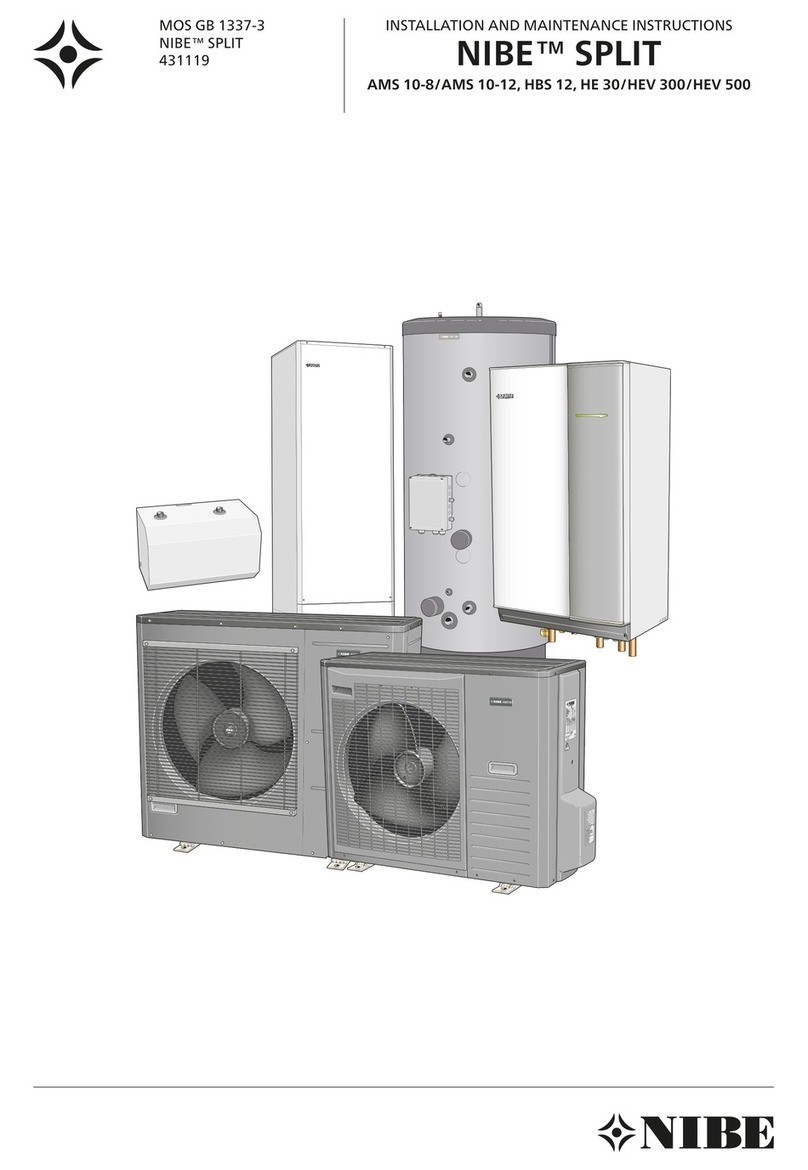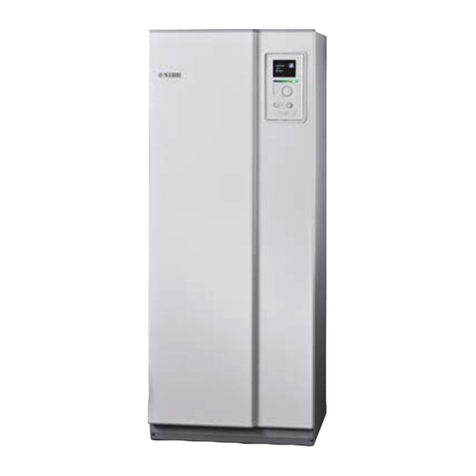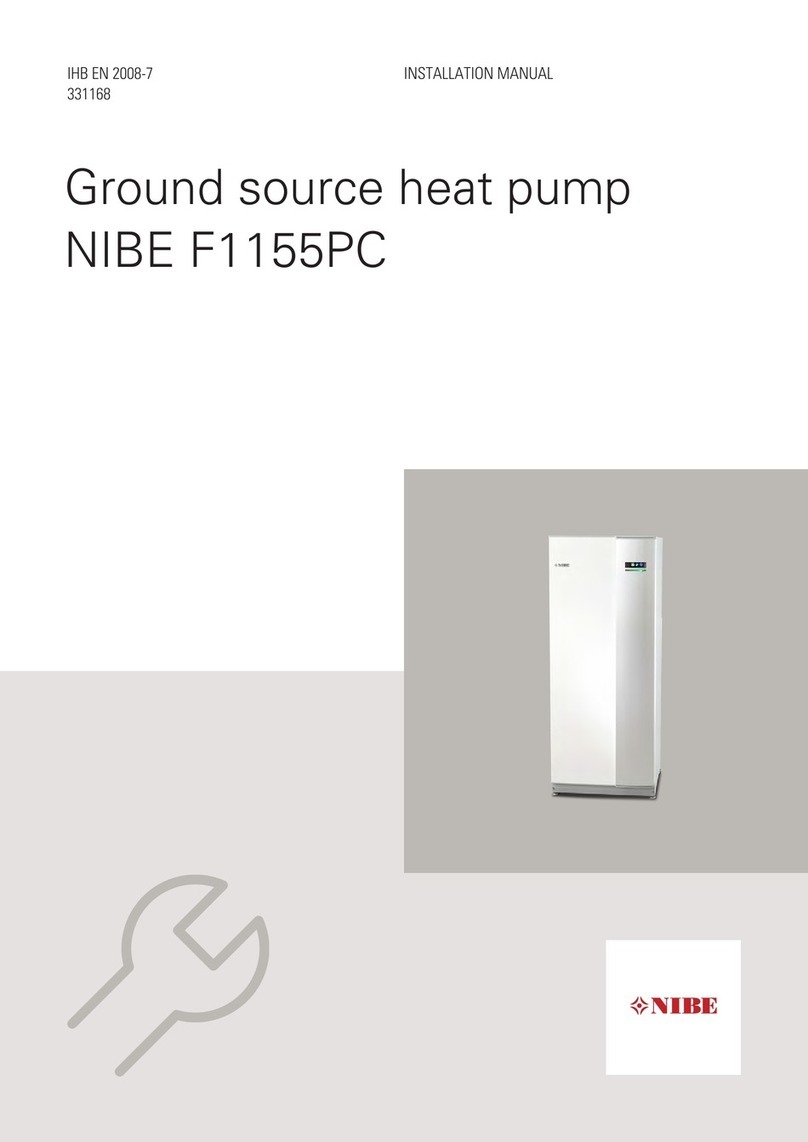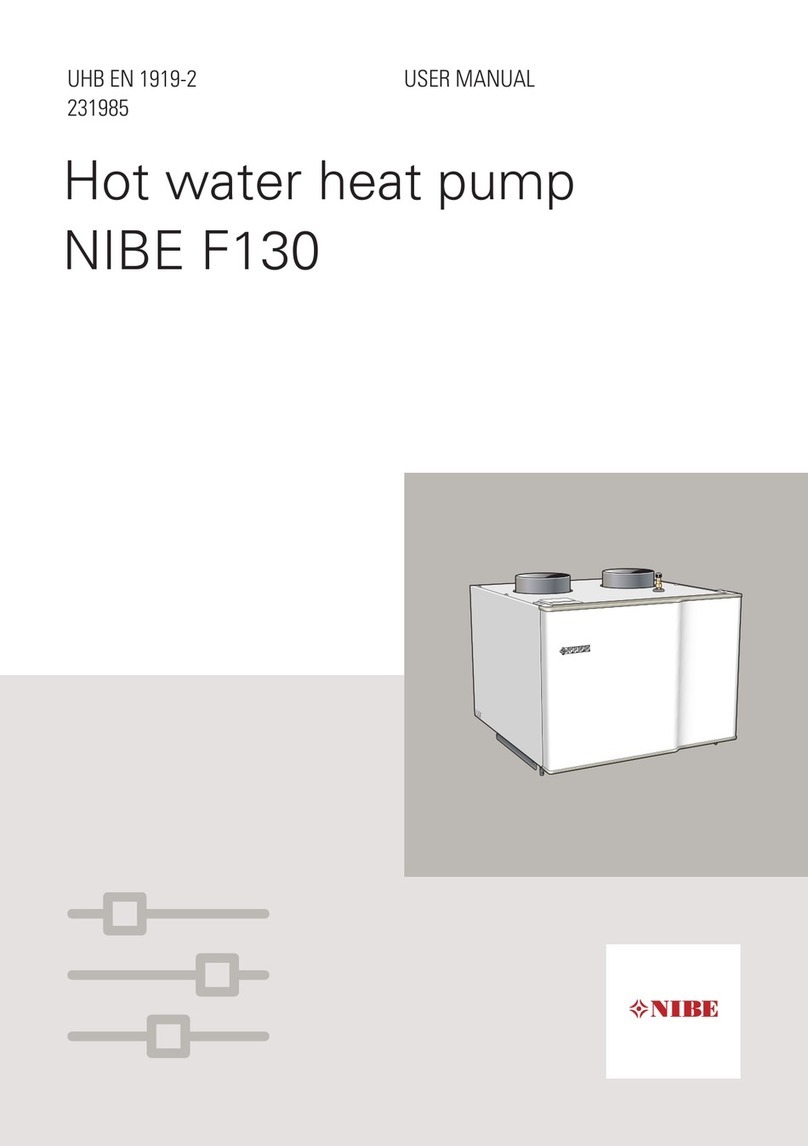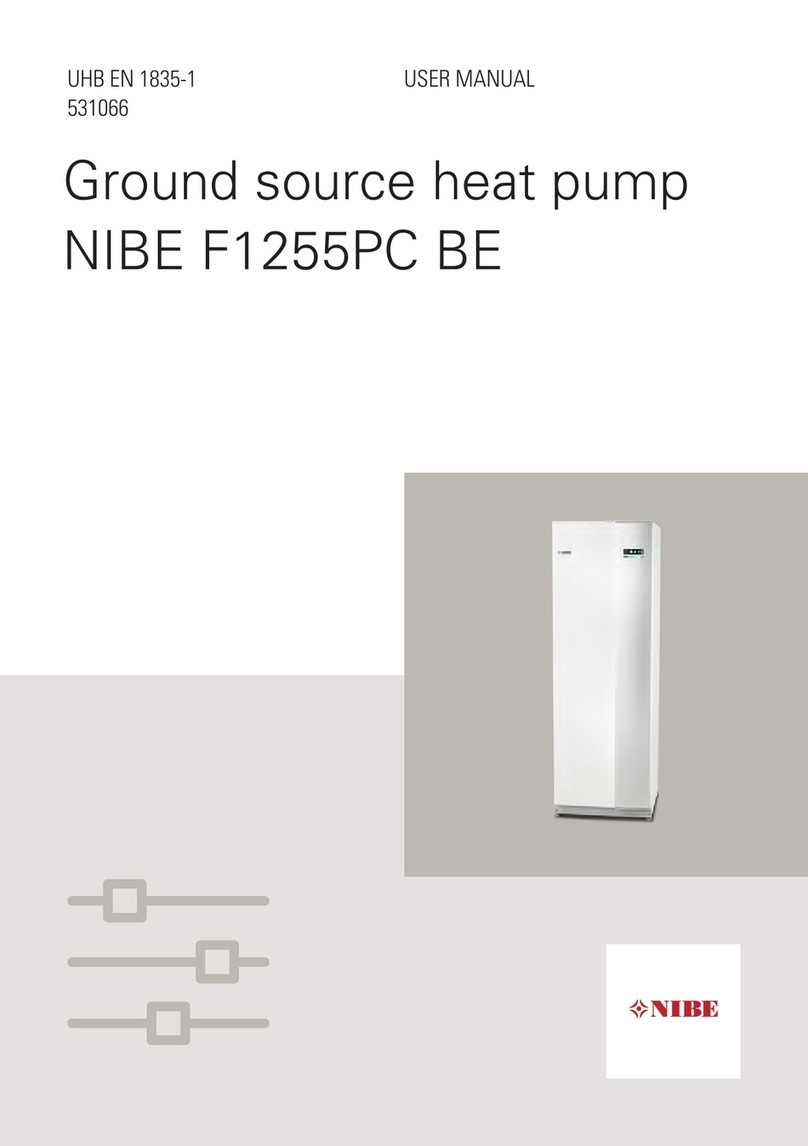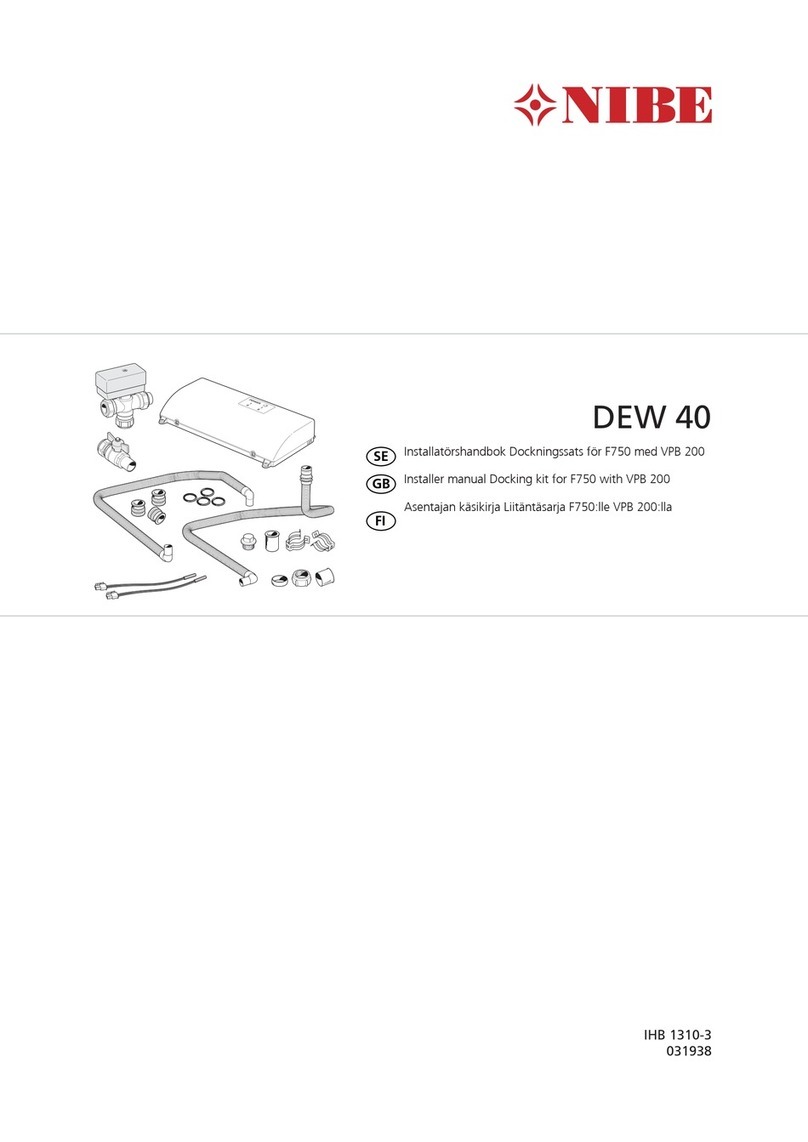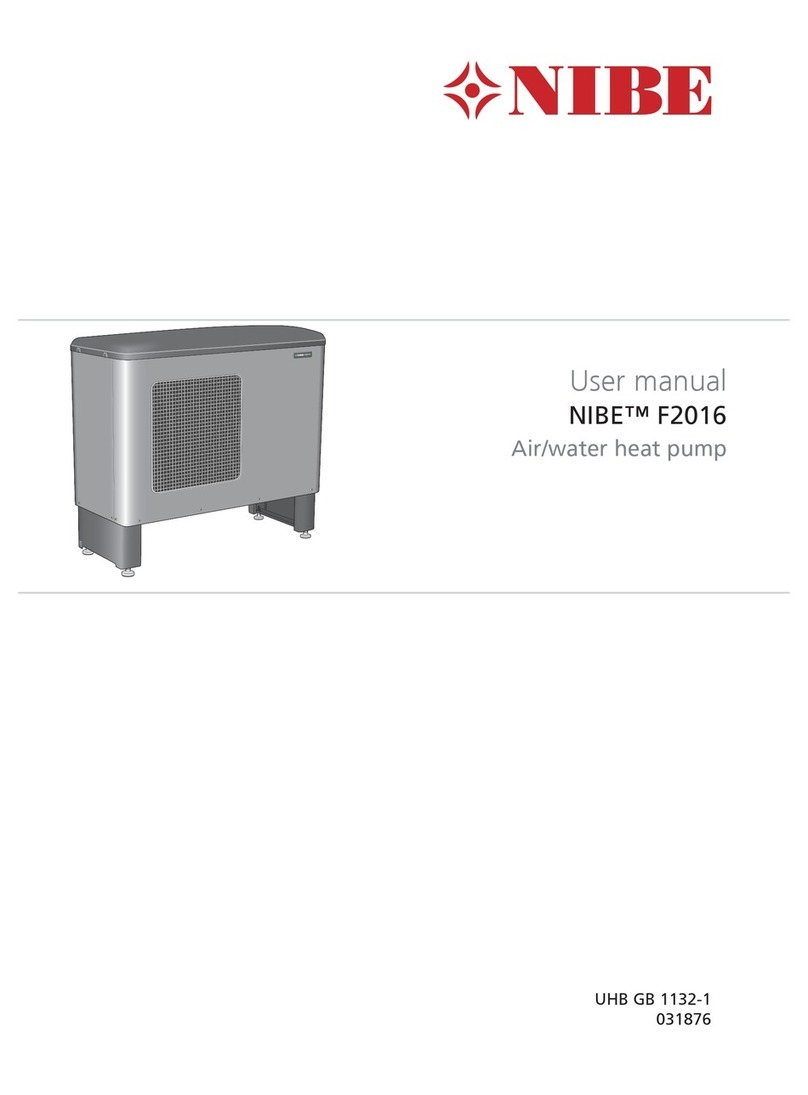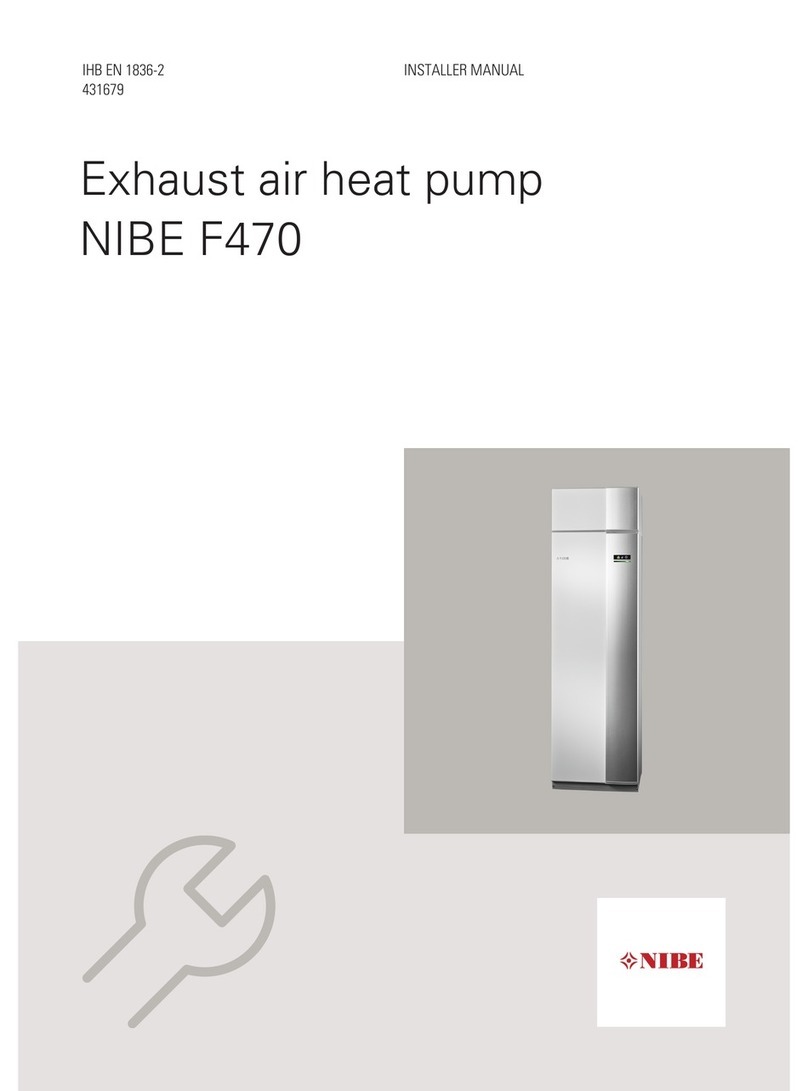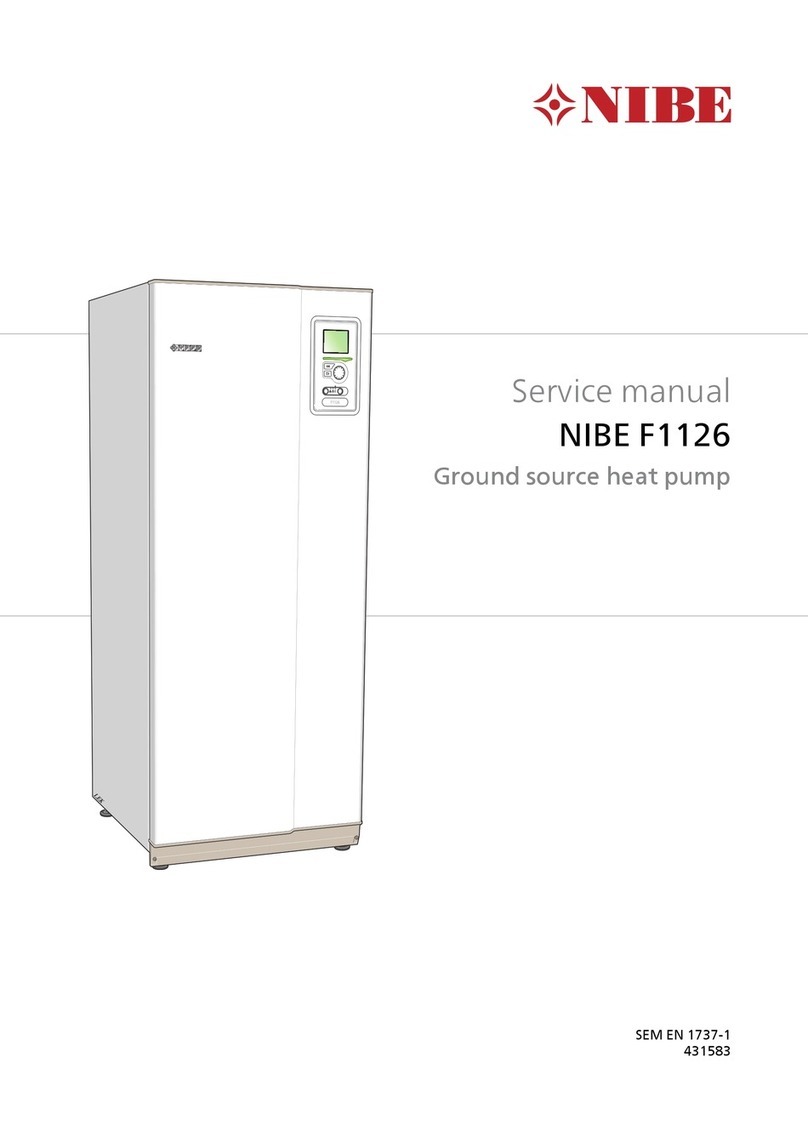
8 NIBE SMO 20
Alarm indications
The status lamp lights red in the event of an alarm and the display
shows detailed information depending on the fault. An alarm log
is created with each alarm containing a number of temperatures,
times and the status of outputs.
Own curve
F1255 has pre-programmed non linear heating curves. It is also
possible to create an own defined curve. This is an individual
linear curve with one break point. You select a break point and
the associated temperatures.
INSTALLATION
Hot water production
when there is a demand for hot water, the heat pump gives this
priority and devotes its entire output to water heating. No room
heat is produced in this mode. Maximum time for hot water
charging can be adjusted in the menu system. After this, heating
is produced for the remaining period of time before further water
heating can take place.
Hot water charging starts when the hot water sensor has fallen
to the set start temperature. Hot water charging stops when
the hot water temperature on the hot water sensor (BT6) has
been reached. For occasional higher demand for hot water, the
“temporary lux” can be used to raise the temperature for 3 – 12
hours (selected in the menu system).
Control, general
The indoor temperature depends on several factors. Sunlight and
heat emissions from people and household machines are nor-
mally sufficient to keep the house warm during the warmer parts
of the year. When it gets colder outside, the climate system must
be started. The colder it is outside, the warmer radiators and floor
heating system must be.
Control of the heat production is performed based on the "float-
ing condensing"principle, i.e. the temperature level needed for
heating at a specific outdoor temperature is produced guided by
collected values from the outdoor and supply temperature sen-
sors. The room temperature sensor can also be used to compen-
sate the deviation in room temperature.
Control and scheduling heat production
The heat supply to the building is controlled in accordance with
the selected control curve (curve slope and offset) in menu 1.9.1.
After adjustment, the correct amount of heat for the current out-
door temperature is supplied. The supply temperature of the heat
pump will hunt around the theoretically required value. For sub-
normal temperatures the control system calculates a heating defi-
cit in the form of "degree-minutes", which means that heating
production is accelerated. The larger the subnormal temperature,
the greater the heat production.
Room sensor
A room temperature sensor can be connected to SMO 20. The
room temperature sensor has up to three functions:
1. Show current room temperature in the control module display.
2. Option of changing the room temperature in °C.
3. Makes it possible to change/stabilise the room temperature.
The control module operates without the sensor, but the sen-
sor must be installed if one wishes to readout the accommoda-
tion's indoor temperature in SMO 20's display. The sensor must
be activated in menu 1.9.4 if the sensor is to be used to change
the room temperature in °C and/or to change/stabilise the room
temperature.
Relay output for emergency mode
The emergency mode relay can be used to activate external ad-
ditional heat, an external thermostat must then be connected
to the control circuit to control the temperature. Ensure that the
heating medium circulates through the external additional heat-
ing. No hot water is produced when emergency mode is acti-
vated.
External circulation pump
Heat production is controlled by the outdoor temperature and a
theoretical desired value of the indoor temperature. This occurs
in accordance with a chosen setting of the regulating curve (curve
slope and offset) in menu 1.9.1.
To reach a high level of heating comfort during the heating phase,
the external circulation pump circulates the hot water in the heat-
ing system even when the domestic hot water output is high.



















